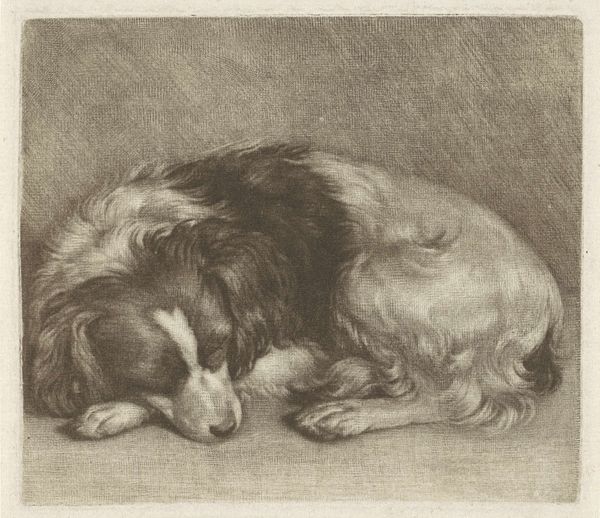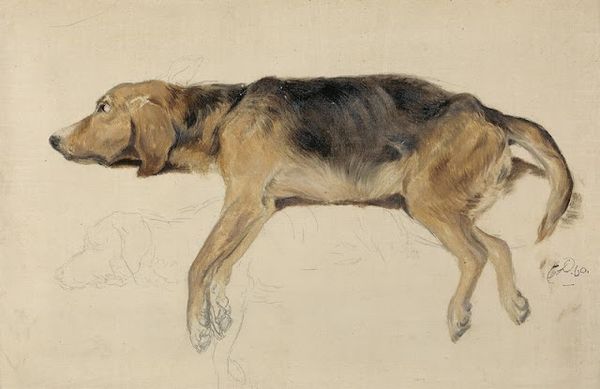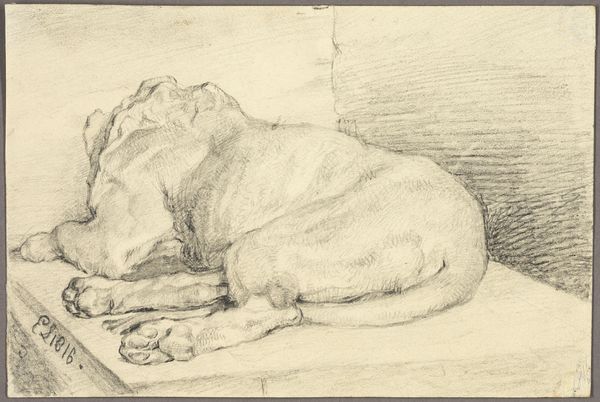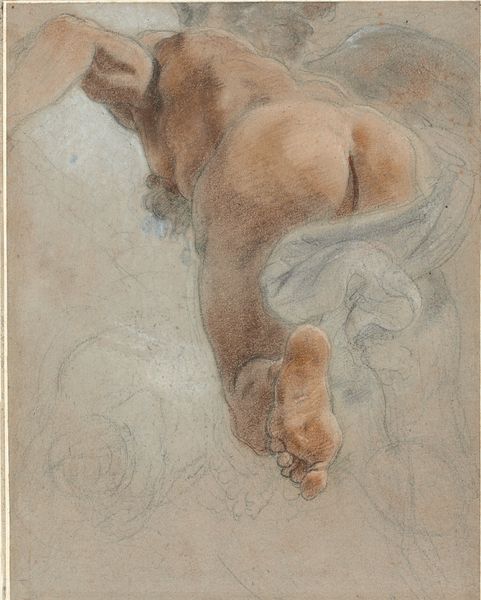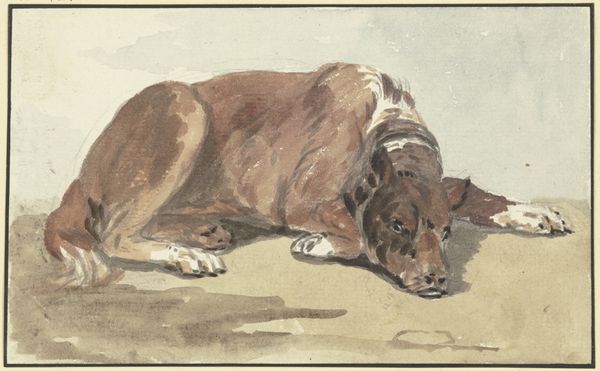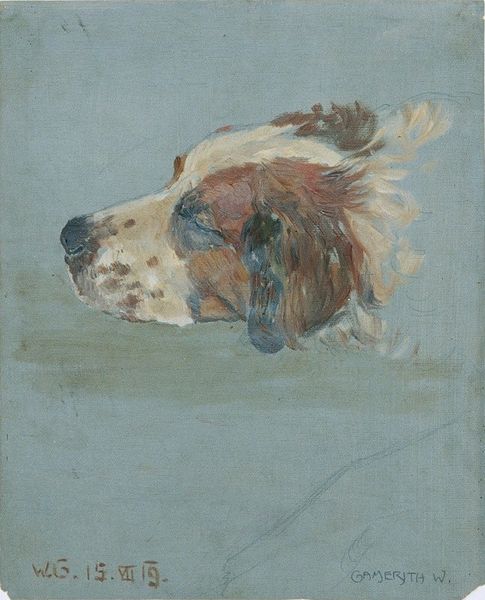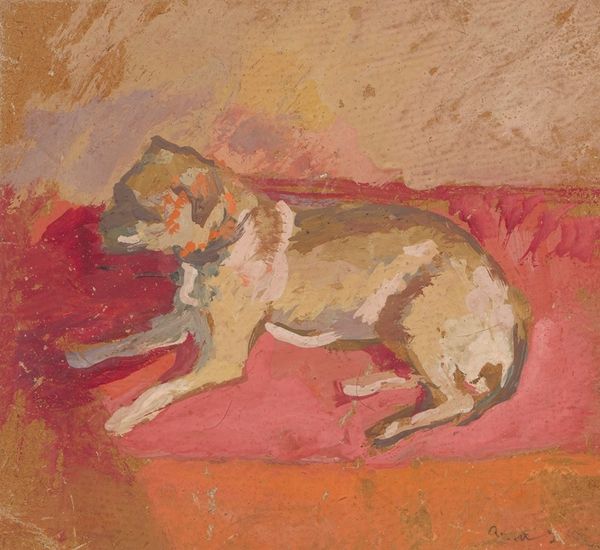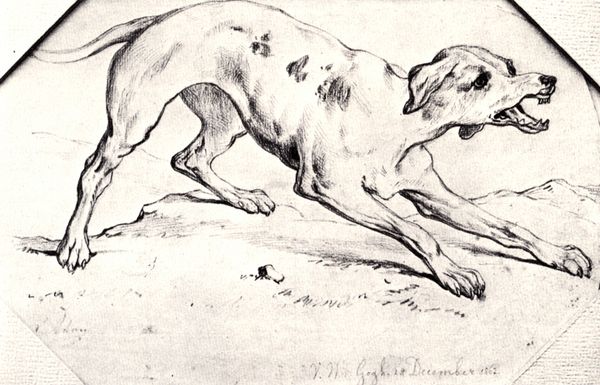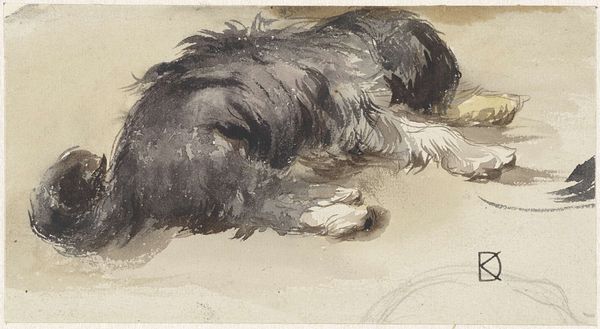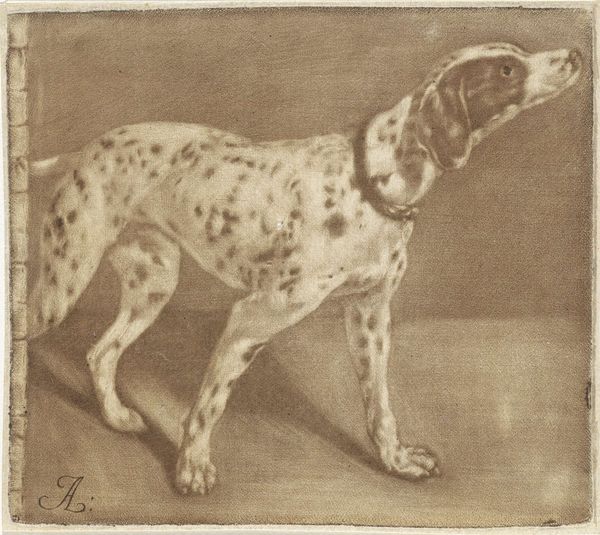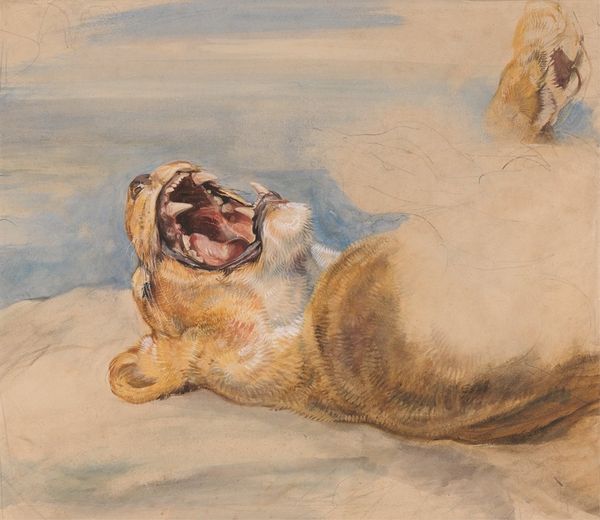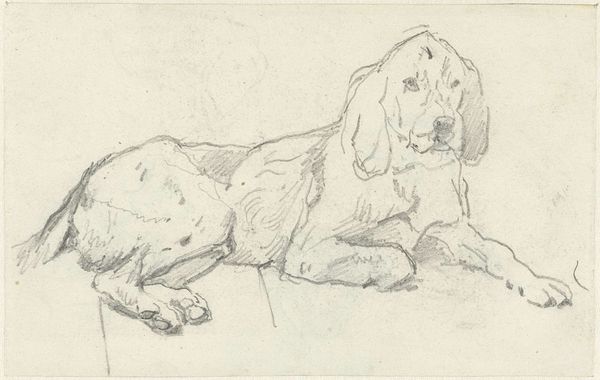
painting, oil-paint
#
portrait
#
animal
#
painting
#
oil-paint
#
landscape
#
figuration
#
oil painting
#
romanticism
#
genre-painting
#
realism
Copyright: Public Domain: Artvee
Curator: Let’s turn our attention to Eugène Delacroix's “Dead Dog,” painted circa 1830. What are your first impressions? Editor: Bleak. The palette is limited to earth tones, ochre, browns, and the poor creature is splayed out, completely still. I can almost smell the dust. It looks so final. Curator: The imagery certainly evokes a sense of desolation. Dogs, historically, symbolize loyalty and companionship, appearing frequently in art to represent fidelity. But here, the broken body of the dog evokes abandonment, perhaps betrayal even. Editor: I'm drawn to the physical aspects, the artist's process. Look at the application of the oil paint – so fluid and expressive, even in depicting death. There is very little detail. Delacroix's brushwork builds up texture and shading to create form without precise outlines. We are left with the body of the dog, as object, to inspect its brutal fate, and our revulsion. Curator: It's interesting you bring up texture, as it works on a symbolic level, too. The coarse application of paint almost mirrors the rough reality of death. The lack of sentimentality forces the viewer to confront mortality. Dogs often have an archetypal role representing protection, particularly in guarding boundaries; in its demise, perhaps, there is a signifier about the precariousness of those boundaries in life. Editor: The lack of background, a swathe of neutral wash, focuses our attention on the materiality of the dog, every limp limb and stripe an indication of the artist's attention to the concrete reality he observes and transcribes using oil paint. One could see the dog as commodity or tool in its own life, a thing used for work or protection, and now abandoned at the point of no value, no purpose, discarded. Curator: That adds another dimension to this, and is deeply unsettling. Thank you. The painting becomes less about an individual animal's fate, and more about a meditation on existence, purpose, and the end. Editor: Yes. By making the production of the work visible, by making the materials—the oil paint itself—speak, Delacroix allows us to question the very act of representing death and decay. It prompts an awareness of art's own constructed reality.
Comments
No comments
Be the first to comment and join the conversation on the ultimate creative platform.

